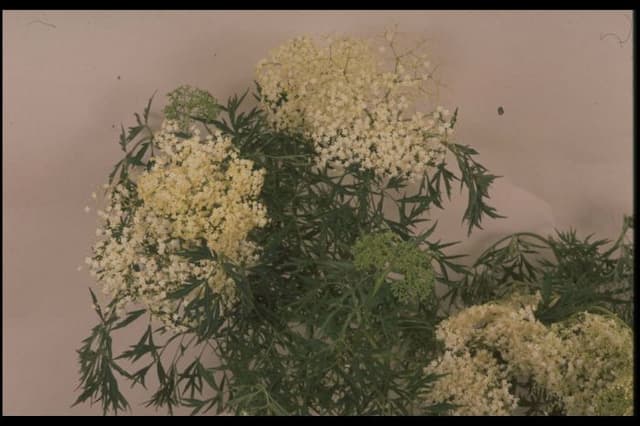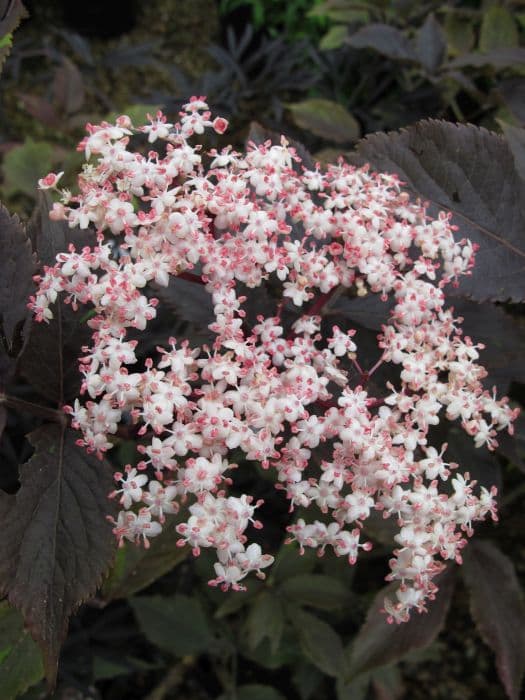Laurustinus Viburnum tinus

ABOUT
Viburnum tinus, often referred to as laurustinus, is a plant characterized by its evergreen foliage and robust, shrub-like appearance. The leaves of this plant are dark green, glossy, and oval-shaped with a slightly toothed edge, providing a lush, dense background throughout the year. Laurustinus is also known for its attractive flowering display, producing clusters of small white or slightly pinkish flowers. These blossoms are often subtly fragrant and emerge from pink buds during the cooler months, providing a delightful contrast against the foliage. Following the flowering period, laurustinus can bear metallic blue to blackish berries that are quite popular among birds. The overall appearance of Viburnum tinus is one of a well-rounded, full-bodied plant with a lively display of foliage, flowers, and fruit that changes with the seasons.
About this plant
 Names
NamesFamily
Adoxaceae
Synonyms
Laurustinus, Laurustinum, Laurustine, Laurestine
Common names
Viburnum hirtum, Viburnum rigidum, Tinus lauriformis, Tinus lucidus, Tinus vulgare.
 Toxicity
ToxicityTo humans
Laurustinus is considered to have a low level of toxicity to humans. However, ingestion of its parts, particularly the berries, may cause mild to moderate symptoms. These can include vomiting, diarrhea, abdominal pain, and nausea. The severity of the symptoms can vary based on the quantity ingested and the sensitivity of the individual. Extreme cases, though rare, might require medical attention, especially for children or individuals with underlying health conditions.
To pets
Laurustinus is also considered to have a low level of toxicity to pets, such as cats and dogs. If they ingest parts of the plant, especially the berries, they may exhibit symptoms such as vomiting, diarrhea, and lethargy. As with humans, the severity can vary, and while serious consequences are uncommon, it's advisable to monitor your pet and consult a veterinarian if they display signs of distress after consuming the plant.
 Characteristics
CharacteristicsLife cycle
Perennials
Foliage type
Evergreen
Color of leaves
Dark green
Flower color
White
Height
6-12 feet (1.8-3.7 meters)
Spread
6-12 feet (1.8-3.7 meters)
Plant type
Shrub
Hardiness zones
7-9
Native area
Mediterranean
Benefits
 General Benefits
General Benefits- Ornamental Appeal: Viburnum tinus, commonly known as laurustinus, is valued for its aesthetic qualities, including its glossy evergreen leaves and the dense, rounded growth habit that provides year-round visual interest.
- Seasonal Blossoms: Laurustinus offers seasonal interest with its pink-budded flowers that bloom in late winter to early spring, providing color and beauty when many other plants are dormant.
- Attract Wildlife: The flowers of laurustinus attract a variety of pollinators, including bees and butterflies, supporting local biodiversity.
- Berries for Birds: After flowering, laurustinus produces blue or black berries that are favored by birds, offering a food source and encouraging avian visitors to the garden.
- Low Maintenance: Laurustinus is known for being a low-maintenance shrub, requiring minimal care once established, which makes it a convenient choice for busy gardeners.
- Drought Tolerance: Once established, laurustinus has good drought tolerance, making it suitable for gardens in drier climates or for gardeners seeking water-wise plants.
- Privacy Screening: Due to its dense foliage, laurustinus can be used as a privacy screen or hedge, providing a natural barrier that is both functional and attractive.
- Versatility: Laurustinus can be grown in a variety of soil types and conditions and can be planted as a stand-alone specimen or as part of a mixed border, making it a versatile choice for many garden designs.
- Coastal Suitability: Laurustinus is suitable for coastal areas as it is able to withstand salt spray, making it ideal for seaside gardens.
 Medical Properties
Medical Properties- Antispasmodic: Viburnum tinus has been used in traditional medicine for its potential to relieve muscle spasms.
- Sedative: Some cultures have used it for its sedative effects, which may help in the management of sleep disorders.
- Anti-inflammatory: The plant has properties that may help reduce inflammation.
- Astringent: It has been traditionally used for its astringent qualities.
- Menstrual cycle regulation: Historically, Viburnum tinus was used to aid in regulating menstrual cycles and relieving related symptoms.
 Air-purifying Qualities
Air-purifying QualitiesThis plant is not specifically known for air purifying qualities.
 Other Uses
Other Uses- Viburnum tinus, commonly known as laurustinus, has been used as a natural insect repellent due to its strong scent which is pleasant to humans but can deter various insects.
- The dense foliage of laurustinus can be trimmed into formal hedges or topiary shapes, making it an excellent choice for ornamental garden design and landscape architecture.
- Laurustinus wood, being quite hard and fine-grained, is sometimes used in woodturning for making small objects such as handles and decorative items.
- Due to its evergreen nature, laurustinus branches with leaves and berries are often utilized in floral arrangements and as long-lasting greenery in bouquets.
- The plant can be used as a privacy screen in residential areas, as it grows dense and can reach heights that block out unwanted views or increase privacy.
- Laurustinus can serve as a backdrop plant in mixed borders due to its relatively large, glossy leaves and seasonal interest with flowers and berries.
- In coastal regions, laurustinus is used for dune stabilization and landscaping as it can tolerate salt spray and helps in preventing soil erosion.
- The nectar and berries of laurustinus attract birds and beneficial insects, making it a valuable addition to wildlife gardens and nature reserves.
- Cuttings from the laurustinus plant are sometimes used in propagation workshops and horticulture education to teach methods of plant multiplication.
- Viburnum tinus can act as a nurse plant in reforestation projects due to its hardy nature, providing shelter and better microclimatic conditions for the establishment of more delicate native species.
Interesting Facts
 Feng Shui
Feng ShuiThe Laurestinus is not used in Feng Shui practice.
 Zodiac Sign Compitability
Zodiac Sign CompitabilityThe Laurestinus is not used in astrology practice.
 Plant Symbolism
Plant Symbolism- Renaissance and Renewal: Viburnum tinus often blooms in the late winter or early spring, symbolizing the transition from cold, dormant periods to the season of growth and rejuvenation.
- Protection: In some cultures, Viburnum tinus, commonly known as Laurustinus, is believed to offer protection against negative forces and is planted near homes for this purpose.
- Endurance and Strength: The evergreen nature of Laurustinus signifies enduring strength and the ability to withstand hardships, as the plant maintains its leaves throughout the seasons.
 Water
WaterThe Laurustinus (Viburnum tinus) should be watered deeply and thoroughly to ensure the root zone is sufficiently moistened. During the growing season, water the plant once a week with about 1 to 1.5 gallons of water, depending on the weather and soil conditions. Reduce watering in the fall and winter when plant growth slows down, providing water only when the topsoil feels dry to the touch. Avoid overwatering as this can lead to root rot.
 Light
LightLaurustinus thrives in full sun to partial shade. It performs best when it receives at least 4 to 6 hours of direct sunlight per day, however, it can tolerate shaded conditions. The ideal spot for this plant is one where it receives morning sunlight and afternoon shade to protect it from the intense heat of the day.
 Temperature
TemperatureLaurustinus prefers a temperate climate and can survive in temperatures ranging from 10°F to 80°F, making it quite hardy. The ideal temperature range for this plant is between 50°F and 70°F. It can withstand brief periods of cold down to 10°F and heat up to 80°F but should be protected from extreme temperature fluctuations.
 Pruning
PruningPrune the Laurustinus to maintain shape, remove dead or damaged wood, and encourage bushier growth. The best time for pruning is immediately after the plant has finished blooming in late winter or early spring. Typically, this plant should be pruned annually or biannually, depending on the desired shape and size.
 Cleaning
CleaningAs needed
 Soil
SoilLaurel prefers well-draining soil enriched with organic matter and a pH range of 5.5 to 6.5. A mix with loam, compost, and perlite suits it well.
 Repotting
RepottingLaurustinus should be repotted every 2-3 years to replenish soil nutrients and provide space for growth.
 Humidity & Misting
Humidity & MistingLaurustinus thrives best at moderate humidity levels, avoiding excessively dry or highly humid environments.
 Suitable locations
Suitable locationsIndoor
Place Laurustinus in bright, indirect light with some direct morning sun.
Outdoor
Plant Laurustinus in partial shade to full sun with shelter from harsh winds.
Hardiness zone
7-10 USDA
 Life cycle
Life cycleViburnum tinus, commonly known as laurustinus, begins its life cycle as a seed, which, once germinated in favorable conditions, develops into a seedling. As the seedling matures, it grows into a juvenile plant, developing a root system and foliage while progressively increasing in size. During its adult phase, laurustinus reaches full maturity and begins to flower and produce berries, usually in the late winter to early spring. The flowers are hermaphroditic, containing both male and female reproductive structures, which allows for self-pollination, although they also attract pollinators such as bees and butterflies. After pollination, the flowers develop into small, metallic-blue fruits, which are dispersed by birds and other animals, or they may fall to the ground and start the cycle anew when conditions are right. Laurustinus plants can live many years, creating a large, dense, evergreen shrub that can be used in landscaping for hedging or ornamental purposes.
 Propogation
PropogationPropogation time
Spring-Early Summer
Propogation: The most popular method of propagation for Viburnum tinus, commonly known as laurustinus, is through semi-hardwood cuttings. This process begins in late summer when you select healthy, new growth that has just begun to harden or mature. Cuttings should be about 4 to 6 inches long and include several sets of leaves. Remove the leaves from the lower half of the cutting and dip the cut end into a rooting hormone to encourage root development. The cuttings are then inserted into a well-draining potting mix or propagating medium and kept moist. To maintain humidity, cover the pots with a plastic bag or place them in a greenhouse. Roots typically develop within a few weeks to a few months, after which the new laurustinus plants can be transplanted into the garden.









